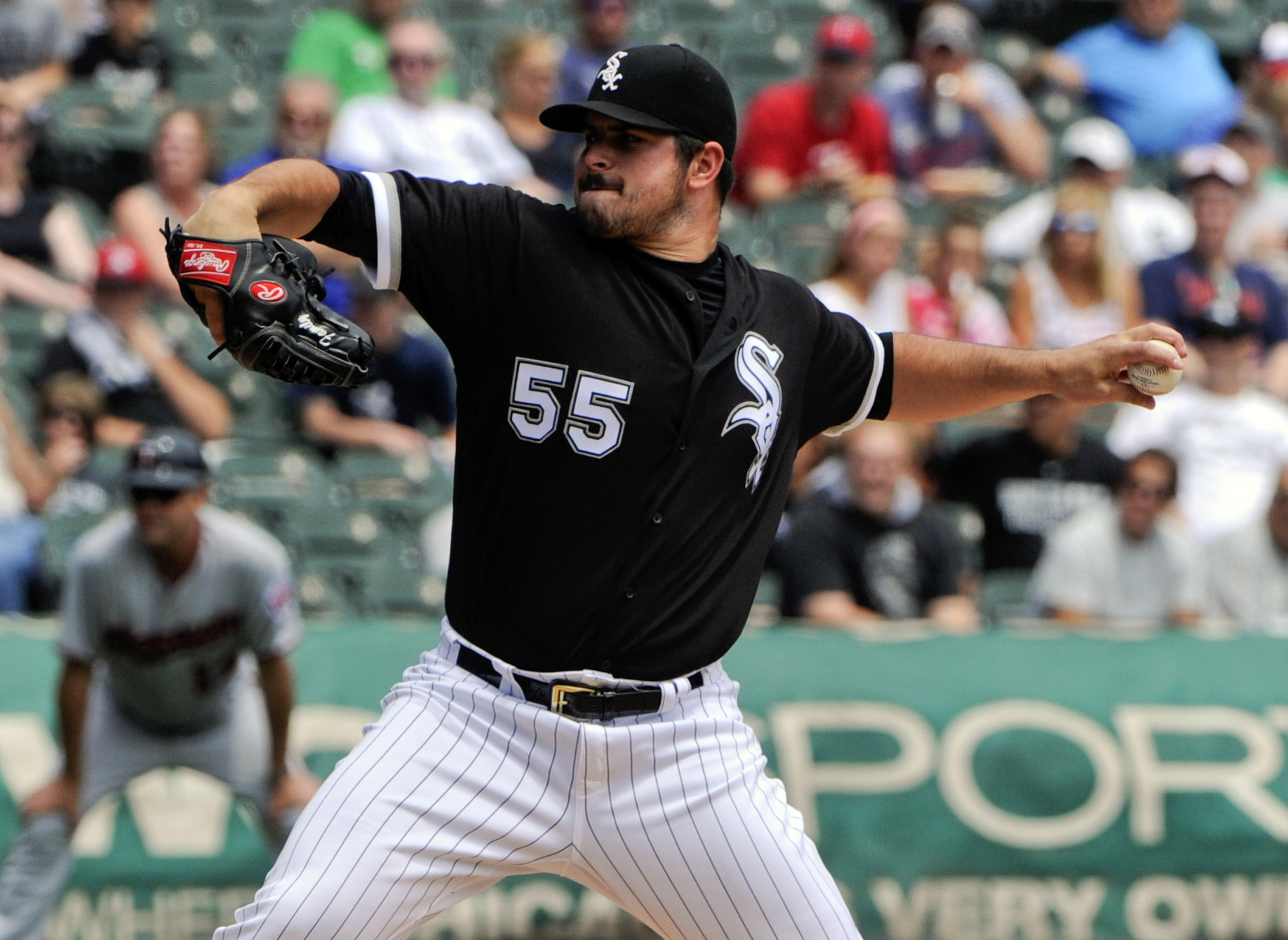Carlos Rodon controls his own future.
Which is to say, Rodon, who has now thrown more than a season’s worth of innings since joining the White Sox rotation last May, still has yet to fully reach the potential the Sox saw in him when they made him the No. 3 overall pick in the MLB Draft just two years ago.
That alone is encouraging, considering what the 23-year-old, who will make his 16th start of the season and 39th of his career on Tuesday against the Yankees, has already done across the first 226 innings of his career.
Let’s start with the strikeouts. The selection of Rodon and his quick ascension to the majors — he threw only 34.1 innings in the minors — was based on the knowledge that his slider was already advanced enough to consistently get major league hitters out. Sure enough, Rodon’s K/9 of 9.1 is in the upper echelon of major league starters, ranking 22nd in the league among qualified pitchers, ahead of the likes of Corey Kluber, Cole Hamels, and even his teammate Chris Sale.
The slider is the fulcrum of this success, of course, and has been every bit as advertised since he joined the rotation. When hitters swing at his slider, 40 percent of the time they miss. And of the 15 pitchers who have thrown as many as or more than the 415 sliders Rodon has thrown this year, only Julio Teheran, Clayton Kershaw and Michael Pineda have a higher swing-and-miss percentage.
In short, it’s a good pitch. But the results for Rodon over the last year have been mixed, and that’s where the whole “controls his own future” thing comes in. When Rodon works the count to a position where he can put away a hitter with the slider, things usually work out in his favor. It’s getting to that point that has been the struggle, and pitching coach Don Cooper says controlling his fastball and commanding the strike zone are the keys to Rodon taking the next step in his development.
“We’re just trying to get more strikes out of him,” Cooper said. “He’s got a great slider and the fastball can be good when he’s locating. If he can get ahead in the count he can be deadly.”
Hitters are batting .317/.497/.495 against him when ahead in the count, which makes sense as hitters are generally going to fare better when the count is in their favor. It isn’t even any worse than the league average of .305/.469/.531. However, it’s avoiding those hitter counts that has been the problem for Rodon.
“We’re looking for him to throw strikes early in the count and get ahead,” Cooper said. “He needs to increase his first-pitch strikes. It’s at 50-52 percent right now. It needs to be higher. 60 percent or above would be ideal.”
Indeed, Rodon is falling behind in the count more often than not. The 60 percent mark Cooper noted is actually the league average for first-pitch strikes, and Rodon has hovered around the 52 percent mark since he debuted last season. The numbers get worse, however, as he falls behind 3-0 in the count 7.6 percent of the time (league average 4.4 percent), and conversely, he gets hitters to 0-2 count just 20.4 percent of the time (league average 24.8 percent).
He’s walking fewer batters, down to 3.1 per nine innings from 4.6 a year ago, but the increase in home runs allowed (13 in 87 innings after allowing 11 in 139.1 innings a year ago), as well as opponents’ overall batting lines (.284/.344/.430) suggests that when he’s not locating it is within the zone and up in a hitter’s wheelhouse. Hitters are slugging .546 against his fastball this year, compared to just .364 a year ago and his catcher, Alex Avila, echoed much of what Cooper said about his struggles.
“With him, just like any other pitcher, it’s all about commanding the zone,” Avila said. “He’s got such unbelievable stuff that as long as he’s commanding those pitches he can make hitters look really, really silly. The talent is there. He goes through the typical struggles an inexperienced pitcher goes through. Over time, though, his stuff will combine with the knowledge he gains and it will make him a quality starter for his entire career. He definitely has tremendous talent.”
Rodon has taken strides throughout the approximately one full season he’s spent with the team, and it’s easy to see why the White Sox remain optimistic about him developing into a third front-line starter to pair with Sale and Jose Quintana.
The improvements are there, as just last time out against Minnesota he started 16 of the 23 batters he faced with a strike. Continuing that trend, controlling the strike zone and locating well are the keys to him taking that next step.
Lead Photo Credit: Matt Marton-USA TODAY Sports

3 comments on “Carlos Rodon’s development all about control”
Comments are closed.